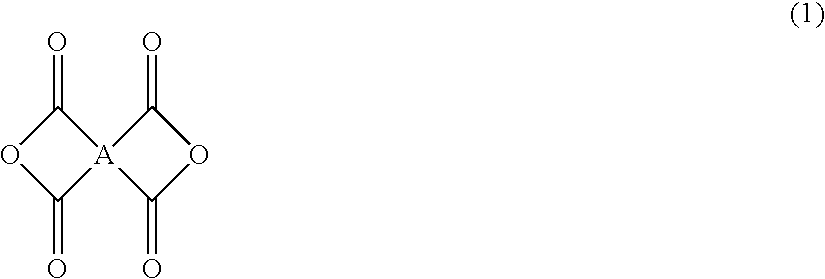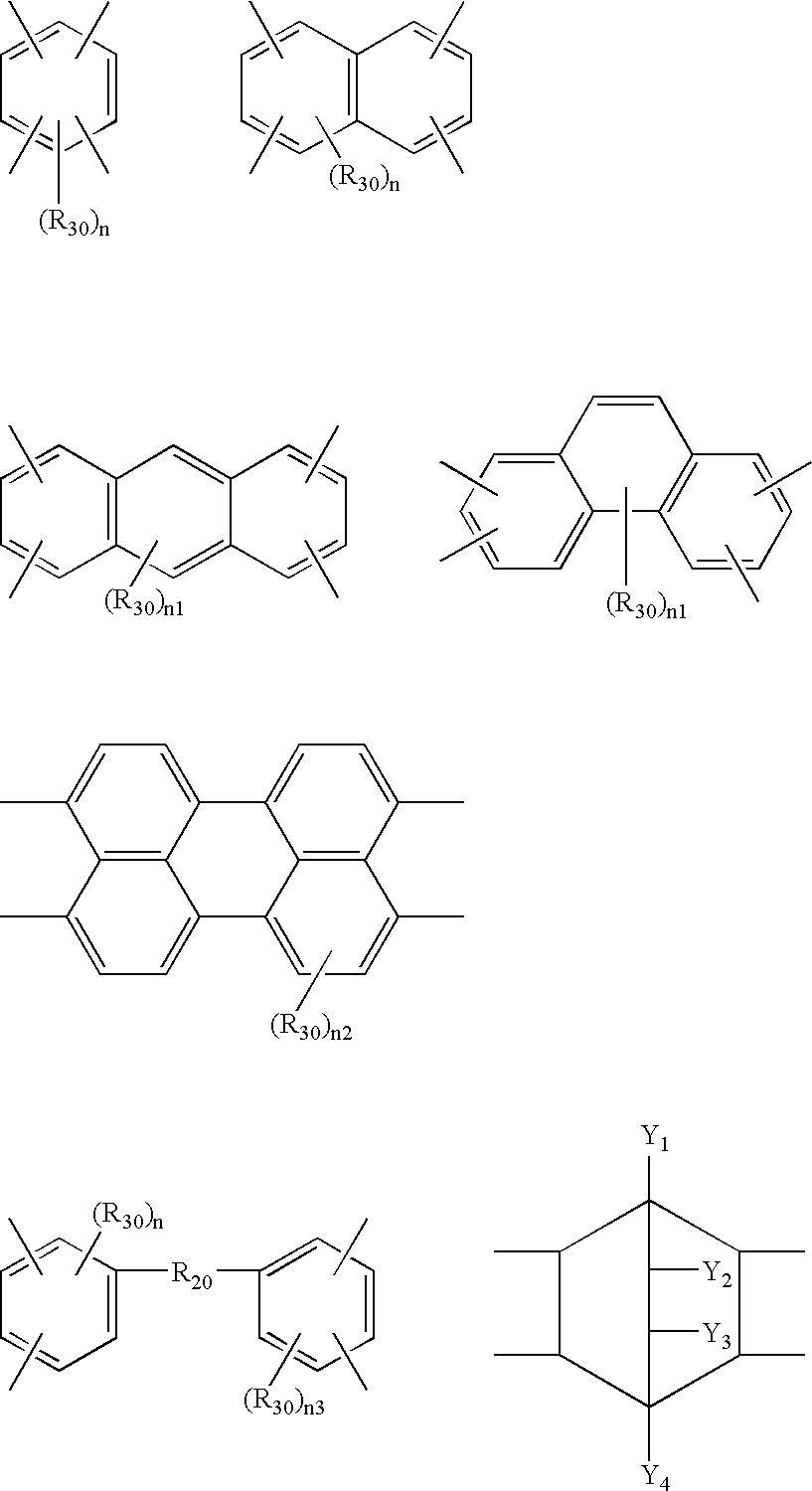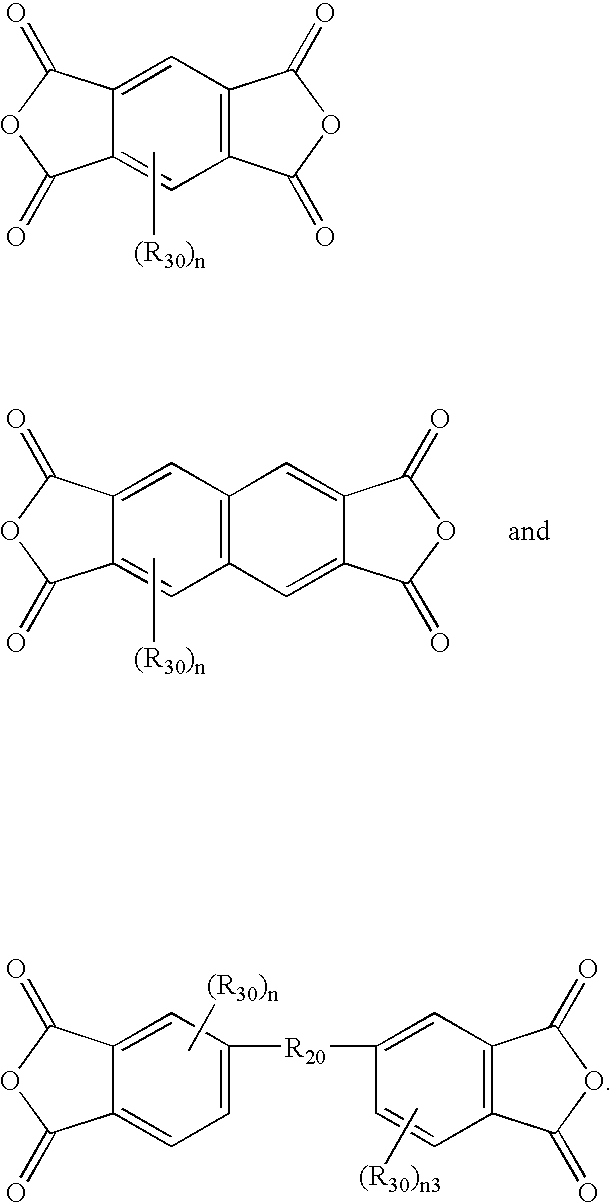Process for making polyesters
- Summary
- Abstract
- Description
- Claims
- Application Information
AI Technical Summary
Benefits of technology
Problems solved by technology
Method used
Image
Examples
example 1
[0082] 1.0 mole of pyromellitic dianhydride was suspended in 300 g of acetonitrile in a 2 L-flask with a condenser and a mechanical stirrer. Then 1.05 moles of ethylene glycol was added. Under nitrogen, the mixture was heated to a gentle reflux. The reaction was continued for 24 hrs. After cooling the reaction mixture to room temperature, stirring was continued for a few additional hours. A white precipitate formed during the reaction and was collected by suction and washed thoroughly with acetonitrile. The solid was dried in a vacuum oven for 1 day. Yield: about 90%. The polymer had a weight average molecular 41,100 g / mol.
example 2
[0083] 1.0 mole of pyromellitic dianhydride was suspended in 300 g of acetonitrile in a 2 L-flask with a condenser and a mechanical stirrer. Then 1.00 moles of ethylene glycol was added. Under nitrogen, the mixture was heated to a gentle reflux. The reaction was continued for 24 hrs. After cooling the reaction mixture to room temperature, stirring was continued for a few additional hours. A white precipitate formed during the reaction and was collected by suction and washed thoroughly with acetonitrile. The solid was dried in a vacuum oven for 1 day. Yield: about 90%. The polymer had a weight average molecular 269.00 g / mol.
example 3
[0084] 0.2 moles of 3,3′,4,4′-benzophenone-tetracarboxylic dianhydride and 0.2 moles of 3,6-dithioctane-1,8-diol were suspended in 250 g of a cetonitrile in a 1 L-flask with a condenser and a mechanical stirrer. Under nitrogen, the mixture was heated to a gentle reflux. The reaction was maintained for 24 hours. A polymer precipitated out during the reaction. After the reaction mixture was cooled to room temperature, the polymer was collected by suction. The polymer was redissolved in 300 ml of acetone and reprecipitated from water. The polymer was collected and washed thoroughly with water. Finally the polymer was dried in a vacuum oven. The overall yield for the polymer was about 65%. The polymer obtained had a weight average molecular weight of about 5,830 g / mol.
PUM
 Login to view more
Login to view more Abstract
Description
Claims
Application Information
 Login to view more
Login to view more - R&D Engineer
- R&D Manager
- IP Professional
- Industry Leading Data Capabilities
- Powerful AI technology
- Patent DNA Extraction
Browse by: Latest US Patents, China's latest patents, Technical Efficacy Thesaurus, Application Domain, Technology Topic.
© 2024 PatSnap. All rights reserved.Legal|Privacy policy|Modern Slavery Act Transparency Statement|Sitemap



